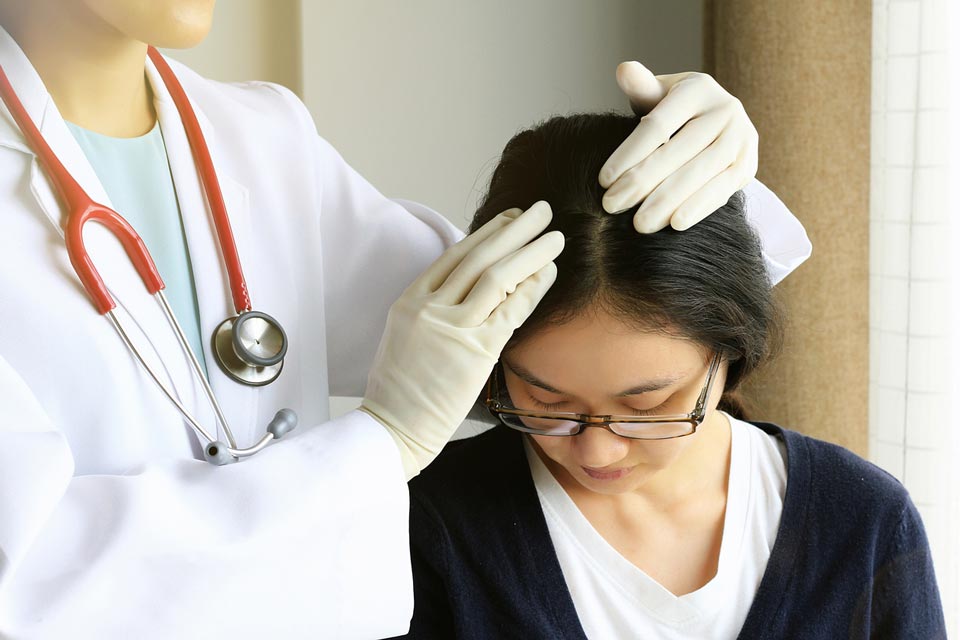Conventional Treatment Options for Female Pattern Hair Loss

It is unlikely for most women with female pattern hair loss (FPHL) to experience serious balding. However, given the psychological impact of thinning hair many will choose to try and alleviate or reverse hair loss. 30
Diagnosis Is Critical to Treatment
A complete clinical history and exam are critical to correctly diagnosing and successfully treating FPHL. possibly Blood tests and scalp biopsymay be needed to determine if excessive androgens or androgen-to-estrogen ratios are involved. Since female hair thinning is typically diffuse it may be even more difficult to accurately assess progress during treatment. For this reason, experts recommend taking baseline photographs for comparison. 30
Treatment Options
Decisions on which treatments to try depend on the patient's diagnosis and other clinical factors. The good news is that there are a number of different medical, herbal, and nutritional treatment options available to help treat FPHL, with varying degrees of success. 30, 333, 361, 362
These include:
- 5α-reductase inhibitors (such as finasteride) help limit the amount of testosterone that converts to DHT, a potent form of testosterone that promotes hair loss.
- Dietary changes and weight loss if necessary, especially if hair loss is due to certain endocrine disorders such as polycystic ovary syndrome (PCOS) and diabetes.
- Drugs that block androgen receptors.
- Drugs that suppress adrenal and/or ovarian activity.
- Hair transplant surgery.
- Phototherapy (low level laser therapy).
- Platelet-rich plasma (PRP).
- Stem cell therapy (administered by superficial injections to the scalp).
- Topical treatments that promote hair growth and/or suppress factors that contribute to hair loss (such as minoxidil).
- Treatments for underlying systemic conditions (e.g., (PCOS), thyroid disorders, and Cushing disease).
Effectiveness of Treatment
A review of nonsurgical treatment options suggests the following levels of effectiveness: 337
- Most effective: low level laser therapy (LLLT).
- Equal effectiveness (after LLLT): PRP, finasteride (1 mg/day), and minoxidil (both 2% and 5%).
Experts caution that more and better clinical trials should be conducted to corroborate these early findings. Results from three recent clinical studies also highlight the difficulty in achieving statistically significant, repeatable results in all patients with hair loss:
- A pilot study found that PRP only provided substantial improvement in about 13% of subjects. This was not a statistically significant difference from the placebo group. 363
- On the other hand, in a different clinical trial women showed statistically significant improvement with PRP. Another study showed that PRP treatment brought significant improvement for 10 women who did not respond to other types of treatment. 364, 365
Combination & Natural Treatments
Clinical research suggests combination treatments may be more effective than some single treatments. For example:
- Combining 3% minoxidil with topical finasteride (0.25%) works better than minoxidil alone. 366
- According to a small clinical study, combining Korean red ginseng supplements with 3% topical minoxidil works better than minoxidil alone in hair regrowth. 367
- Results of a randomized, placebo-controlled study indicate that combining 5% minoxidil with low level laser therapy increases hair diameter and hair regrowth significantly better than minoxidil alone. 368
Some herbs and nutrients may also help counteract the effects of excess androgen hormones. Nutritional supplements (such as vitamin B12, biotin, and iron) and herbal remedies (e.g., stinging nettle root and ginkgo) support healthy hair and may help reduce stress and anxiety.
Caution
Researchers caution that the combination of minoxidil and finasteride should only be given to postmenopausal women. That's because blood tests revealed the treatment caused a significant change in systemic DHT hormone levels. 366
Although a pilot clinical trial showed that botulinum injections helped regrow hair in men suffering from androgenetic hair loss, women may want to avoid this treatment. According to case reports involving 5 female patients, botulinum could actually cause hair loss. The women were receiving botulinum A injections to reduce wrinkles on the forehead. Each woman reported frontal hair loss and a receding hair line. There was no inflammation or scarring observed, but there was evidence of miniaturization of hair follicles (similar to female pattern hair loss). Although there were no pictures of the hairline before the injections, all of the women associated the hair loss with the antiwrinkle treatment. 369


